Formula C3H5NO Density 1.13 g/cm³ Melting point 84.5 °C | Molar mass 71.08 g/mol IUPAC ID prop-2-enamide Soluble in Water | |
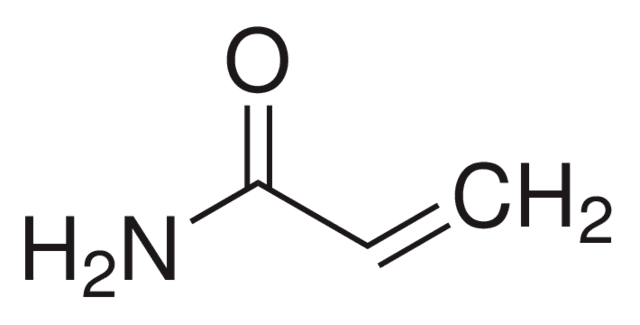 | ||
Appearance white crystalline solid, no odor | ||
Acrylamide (or acrylic amide) is a chemical compound with the chemical formula C3H5NO. Its IUPAC name is prop-2-enamide. It is a white odorless crystalline solid, soluble in water, ethanol, ether, and chloroform. Acrylamide decomposes in the presence of acids, bases, oxidizing agents, iron, and iron salts. It decomposes non-thermally to form ammonia, and thermal decomposition produces carbon monoxide, carbon dioxide, and oxides of nitrogen.
Contents
- Molecular biology laboratories
- Other uses
- Toxicity and carcinogenicity
- Discovery of acrylamide in foods
- Acceptable limits
- Opinions of health organizations
- Heat generated food toxicants HEATOX study
- Public awareness
- Cigarettes
- References
Acrylamide can be prepared by the hydrolysis of acrylonitrile by nitrile hydratase. In industry, most acrylamide is used to synthesize polyacrylamides, which find many uses as water-soluble thickeners. These include use in wastewater treatment, gel electrophoresis (SDS-PAGE), papermaking, ore processing, tertiary oil recovery, and the manufacture of permanent press fabrics. Some acrylamide is used in the manufacture of dyes and the manufacture of other monomers.
The discovery of acrylamide in some cooked starchy foods in 2002 prompted concerns about the carcinogenicity of those foods. As of 2016 it is still not clear whether acrylamide consumption affects people's risk of developing cancer.

Acrylamide is classified as an extremely hazardous substance in the United States as defined in Section 302 of the U.S. Emergency Planning and Community Right-to-Know Act (42 U.S.C. 11002), and is subject to strict reporting requirements by facilities which produce, store, or use it in significant quantities.
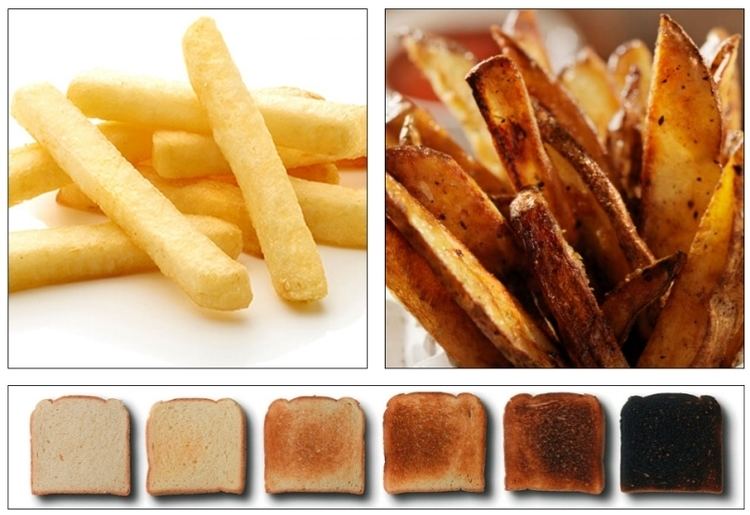
Molecular biology laboratories
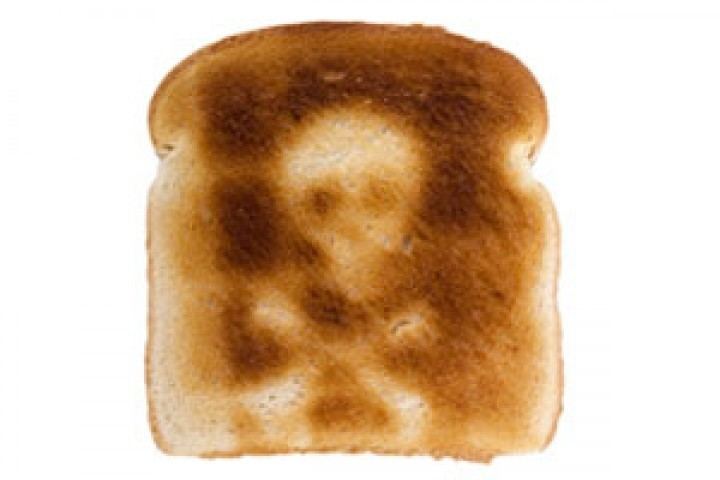
Polyacrylamide was first used in a laboratory setting in the early 1950s. In 1959, the groups of Davis and Ornstein and of Raymond and Weintraub independently published on the use of polyacrylamide gel electrophoresis to separate charged molecules. The technique is widely accepted today, and remains a common protocol in molecular biology labs.
Acrylamide has many other uses in molecular biology laboratories, including the use of linear polyacrylamide (LPA) as a carrier, which aids in the precipitation of small amounts of DNA. Many laboratory supply companies sell LPA for this use.
Other uses
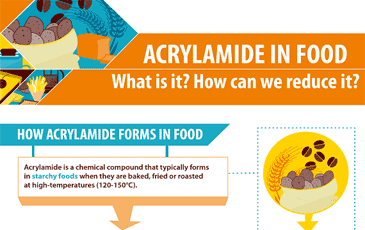
The majority of acrylamide is used to manufacture various polymers. In the 1970s and 1980s, the proportionately largest use of these polymers was in water treatment. Additional uses include as binding, thickening or flocculating agents in grout, cement, sewage/wastewater treatment, pesticide formulations, cosmetics, sugar manufacturing, soil erosion prevention, ore processing, food packaging, plastic products, and paper production. Polyacrylamide is also used in some potting soil. Another use of polyacrylamide is as a chemical intermediate in the production of N-methylol acrylamide and N-butoxyacrylamide.
US demand for acrylamide was 253,000,000 pounds (115,000,000 kg) as of 2007, increased from 245,000,000 pounds (111,000,000 kg) in 2006.
Toxicity and carcinogenicity
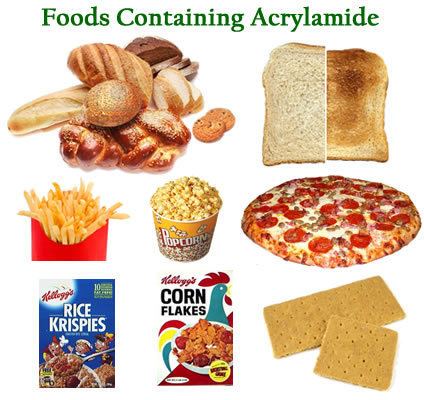
Acrylamide is considered a potential occupational carcinogen by U.S. government agencies and classified as a Group 2A carcinogen by the IARC. The Occupational Safety and Health Administration and the National Institute for Occupational Safety and Health have set dermal occupational exposure limits at 0.03 mg/m3 over an eight-hour workday. In animal models, exposure to acrylamide causes tumors in the adrenal glands, thyroid, lungs, and testes. Acrylamide is easily absorbed by the skin and distributed throughout the organism; the highest levels of acrylamide post-exposure are found in the blood, non-exposed skin, kidneys, liver, testes, and spleen. Acrylamide has also been found to have neurotoxic effects in humans who have been exposed. Animal studies show neurotoxic effects as well as mutations in sperm.
As of 2014 it is still not clear whether dietary acrylamide consumption affects people's risk of developing cancer. Experimental results that are based on feeding acrylamide to animals might not be applicable to humans. Food industry workers exposed to double amount of acrylamide than average do not exhibit higher cancer rates.
Acrylamide is also a skin irritant and may be a tumor initiator in the skin, potentially increasing risk for skin cancer. Symptoms of acrylamide exposure include dermatitis in the exposed area and peripheral neuropathy.
Laboratory research has found that some phytochemicals may have the potential to be developed into drugs which could alleviate the toxicity of acrylamide.
Discovery of acrylamide in foods
Acrylamide was discovered in foods in April 2002 by Eritrean scientist Eden Tareke in Sweden when she found the chemical in starchy foods, such as potato chips (potato crisps), French fries (chips), and bread that had been heated higher than 120 °C (248 °F) (production of acrylamide in the heating process was shown to be temperature-dependent). It was not found in food that had been boiled or in foods that were not heated.
Acrylamide has been found in roasted barley tea, called mugicha in Japanese. The barley is roasted so it is dark brown prior to being steeped in hot water. The roasting process revealed 200–600 micrograms/kg of acrylamide in mugicha. This is less than the >1000 micrograms/kg found in potato crisps and other fried whole potato snack foods cited in the same study and it is unclear how much of this is ingested after the drink is prepared. Rice cracker and sweet potato levels were lower than in potatoes. Potatoes cooked whole were found to have significantly lower acrylamide levels than the others, suggesting a link between food preparation method and acrylamide levels.
Acrylamide levels appear to rise as food is heated for longer periods of time. Although researchers are still unsure of the precise mechanisms by which acrylamide forms in foods, many believe it is a byproduct of the Maillard reaction. In fried or baked goods, acrylamide may be produced by the reaction between asparagine and reducing sugars (fructose, glucose, etc.) or reactive carbonyls at temperatures above 120 °C (248 °F).
Later studies have found acrylamide in black olives, prunes, dried pears, and coffee.
The FDA has analyzed a variety of U.S. food products for levels of acrylamide since 2002.
Acceptable limits
Although acrylamide has known toxic effects on the nervous system and on fertility, a June 2002 report by the Food and Agriculture Organization of the United Nations and the World Health Organization attempting to establish basic toxicology (threshold limit value, no-observed-adverse-effect levels, tolerable daily intake, etc) concluded the intake level required to observe neuropathy (0.5 mg/kg body weight/day) was 500 times higher than the average dietary intake of acrylamide (1 μg/kg body weight/day). For effects on fertility, the level is 2,000 times higher than the average intake. From this, they concluded acrylamide levels in food were safe in terms of neuropathy, but raised concerns over human carcinogenicity based on known carcinogenicity in laboratory animals.
Opinions of health organizations
According to the American Cancer Society it is not clear, as of 2016, whether acrylamide consumption increases people's risk of developing cancer.
The World Health Organization (WHO) has set up a clearinghouse for information about acrylamide that includes a database of researchers and data providers; references for research published elsewhere; information updates about the current status of research efforts; and updates on information relevant to the health risk of acrylamide in food.
In February 2009, Health Canada announced that they were assessing whether acrylamide, which occurs naturally during the cooking of French fries, potato chips, and other processed foods, is a hazard to human health and whether any regulatory action needs to be taken. Currently, they are collecting information on the properties and prevalence of acrylamide in order to make their assessment. In December 2009, after a positive reception from the food industry, Health Canada invited comment from the public on this proposal. The European Chemical Agency added acrylamide to the list of substances of very high concern in March 2010.
Heat-generated food toxicants (HEATOX) study
The Heat-generated Food Toxicants (HEATOX) Project was a European Commission-funded multidisciplinary research project running from late 2003 to early 2007. Its objectives were to "estimate health risks that may be associated with hazardous compounds in heat-treated food [, and to] find cooking/processing methods that minimize the amounts of these compounds, thereby providing safe, nutritious, and high-quality food-stuffs." It found that "the evidence of acrylamide posing a cancer risk for humans has been strengthened," and that "compared with many regulated food carcinogens, the exposure to acrylamide poses a higher estimated risk to European consumers." HEATOX sought also to provide consumers with advice on how to lower their intake of acrylamide, specifically pointing out that home-cooked food tends to contribute far less to overall acrylamide levels than food that was industrially prepared, and that avoiding overcooking is one of the best ways to minimize exposure at home.
Public awareness
On April 24, 2002, the Swedish National Food Administration announced that acrylamide can be found in baked and fried starchy foods, such as potato chips, breads, and cookies. Concern was raised mainly because of the probable carcinogenic effects of acrylamide. This was followed by a strong, but short-lived, interest from the press. On August 26, 2005, California attorney general Bill Lockyer filed a lawsuit against four makers of french fries and potato chips – H.J. Heinz Co., Frito-Lay, Kettle Foods Inc., and Lance Inc. – to reduce the risk to consumers from consuming acrylamide. The lawsuit was settled on August 1, 2008, with the food producers agreeing to cut acrylamide levels to 275 parts per billion in three years, to avoid a Proposition 65 warning label. The companies avoided trial by agreeing to pay a combined $3 million in fines as a settlement with the California attorney general's office.
In 2016 the UK Food Standards Agency launched a campaign called "Go for Gold" warning of the possible cancer risk associated with cooking potatoes and other starchy foods at high temperatures.
Cigarettes
Cigarette smoking is a major acrylamide source. It has been shown in one study to cause a three-fold greater increase in blood acrylamide levels than any dietary factor.
